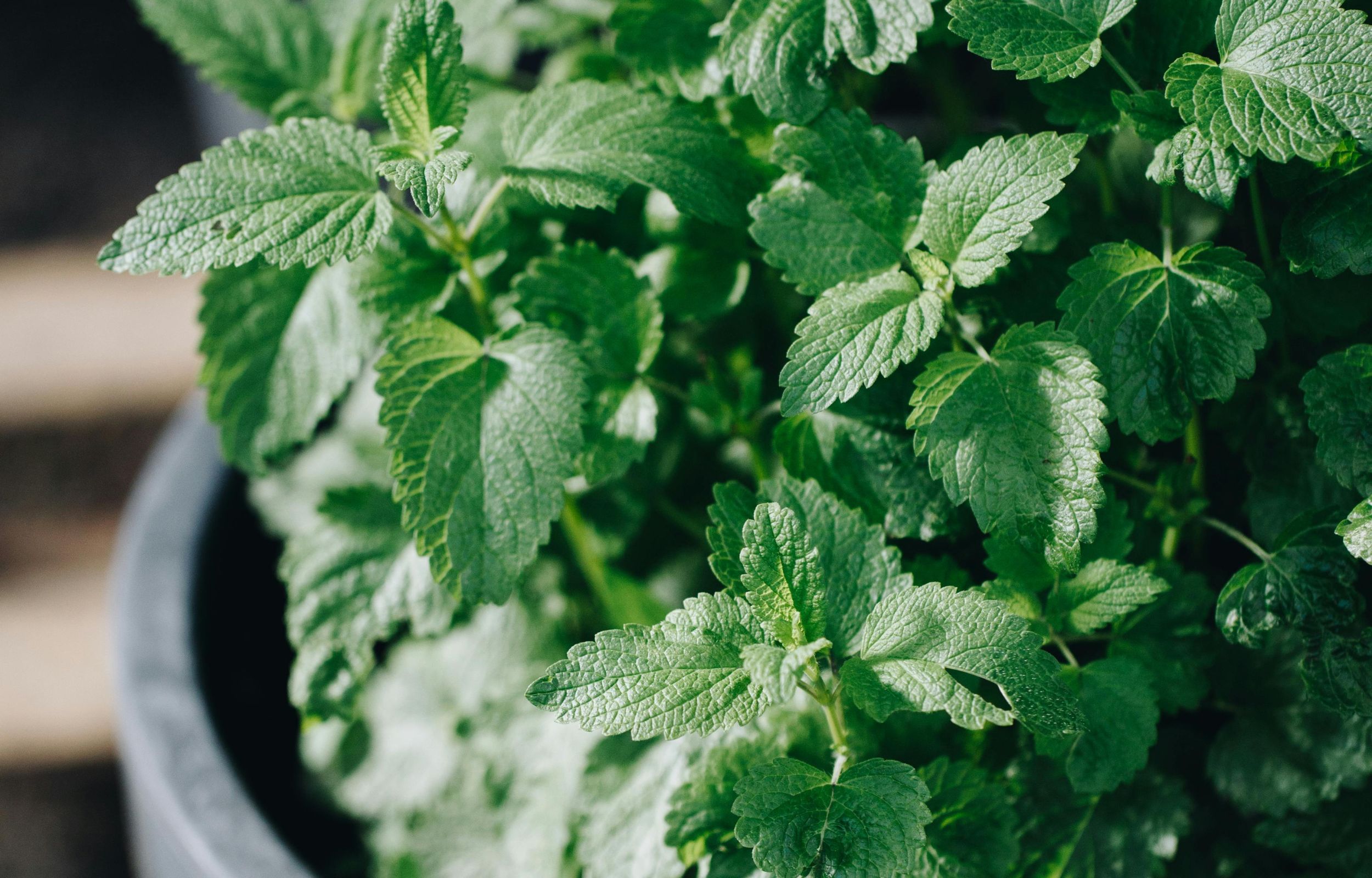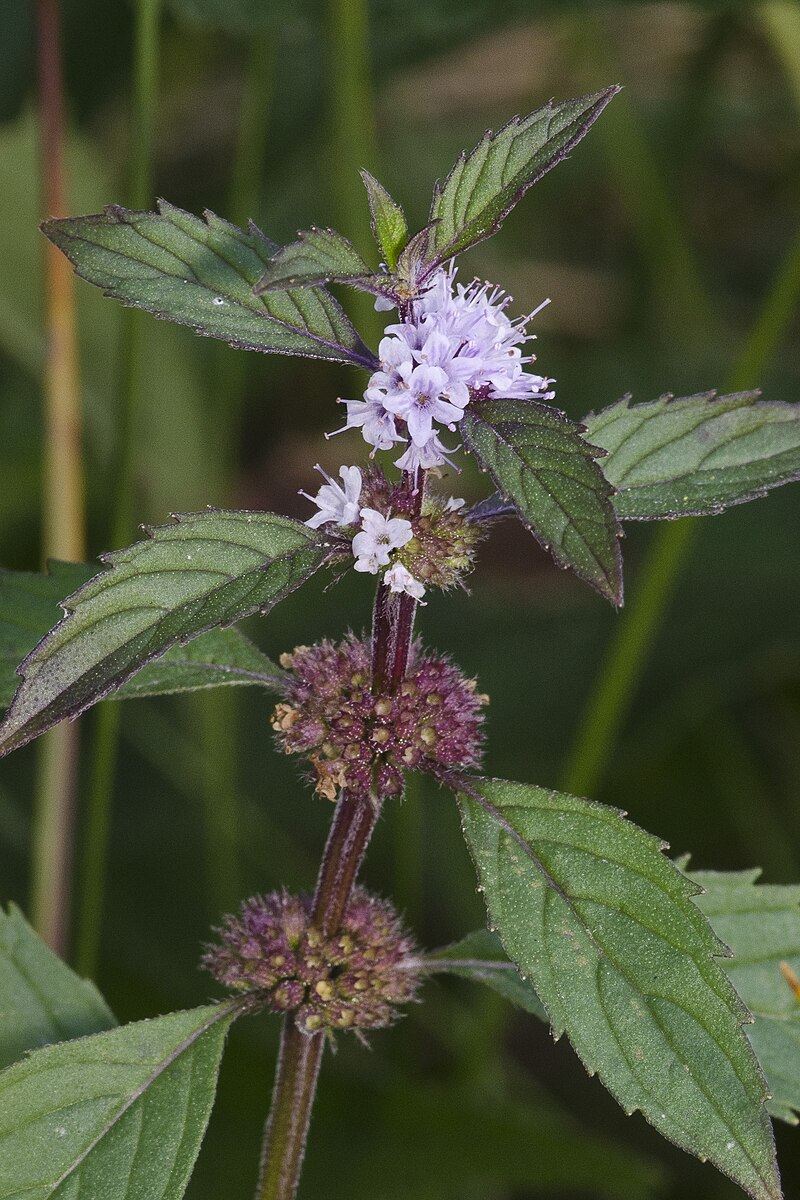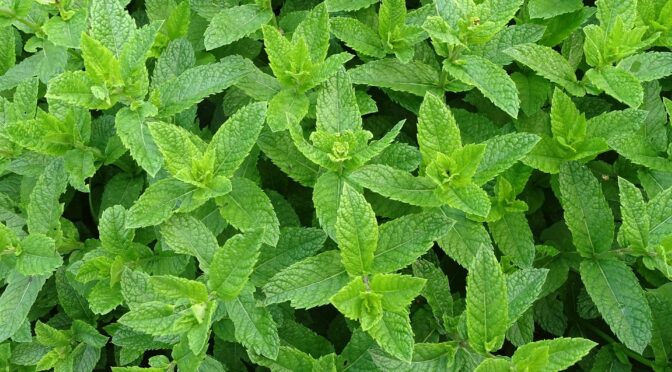Mint is one plant that stirs the pot on social media! Recently, I’ve come across several reels and posts expounding on the horrors of this plant and how you should never plant it in your garden. It’s usually labeled as an invasive, and there are stories of it traveling through neighbors’ yards, through cracks in the sidewalk, and into the woods! That said, many people enjoy growing and using mint. It’s a beautiful herb with wonderful flavor and medicinal properties. In this post, we’ll discuss how to grow mint without it taking over your property.
Is Mint Invasive?
Yes, it can be invasive. Specific types of mint, like culinary mint (Mentha spp.), tend to be aggressive spreaders. Some mint species, like the aforementioned culinary mint, are considered weeds in some states.
While mint can outcompete many of your garden plants and will happily take over disturbed areas like vacant lots and pastures, you generally won’t find it creeping into native forests. Usually, when we think of invasive species, we think of species that readily outcompete our native plants in their natural habitats, like kudzu with its long vines climbing over and killing trees in its quest for the most sun. Mint is not invasive to the degree that kudzu is.
Mint can be controlled, and we’ll discuss how to do that below. Certain species in the mint family are less aggressive. Also, some mints may spread readily but aren’t considered invasive in the same sense because they’re native to the United States.
 Controlling Mint
Controlling Mint
Many mints can spread through seed and creeping roots. This double reproduction is one of the features that allows mint to spread so effectively. There are a few things we can do to prevent this spread.
Many folks recommend growing mint in containers, and this is a great option! Mint makes a beautiful patio or porch plant. It tolerates full sun or partial shade, and there’s some evidence that some mint species may repel insects like mosquitoes.
Growing mint in a small seperate bed is also a good option. If your bed is surrounded by grass, it’s easy to keep it mowed short around it and prevent the mint from spreading. Alternatively, you can hand-pull any escapees. Raised beds with solid bottoms can further eliminate spreading issues. Cut mint before it goes to seed to prevent it from self-sowing in other areas of your garden.
You can also plant mint in less-than-ideal habitats. Generally, mint doesn’t do well in very hot, dry spots. It will be much easier to manage where conditions are unfavorable.
Mint Varieties
As I mentioned above, not all mint species are as aggressive as culinary mint. Do your research before you plant a mint family species. While most mints can be used for culinary and medicinal preparations, their fragrance, flavor, and benefits may vary widely. Some mints are also more ornamental, and you will find variations in appearance and growth habits.

American Wild Mint (Mentha canadensis)
American wild mint is native to most of the United States and much of Canada. It’s an excellent, native aromatic herb that puts on masses of tiny, purplish flowers in later summer. The flowers are a great source of pollen and nectar for native pollinators. Don’t let the fact that it’s native fool you; this mint can spread just as aggressively as the non-native species.
 Anise-Hyssop or Licorice Mint (Agastache foeniculum)
Anise-Hyssop or Licorice Mint (Agastache foeniculum)
This beautiful herb is native to the North-Central US and is cherished for its ornamental beauty and versatile uses. It offers a unique flavor for tea or culinary use, has medicinal properties, and is great for bees.
Anise-hyssop will self-seed, and new patches may pop up, but it doesn’t tend to spread as aggressively as culinary mint.
 Hyssop (Hyssopus officinalis)
Hyssop (Hyssopus officinalis)
Hyssop is a beautiful semi-evergreen sub-shrub or large herb with stunning purple flowers. It has a strong flavor and a camphor-like odor, and it’s often used to season poultry. It doesn’t share culinary mint’s strong, aggressive tendencies.
 Catnip (Nepeta cataria)
Catnip (Nepeta cataria)
This mint can be used medicinally or to amuse your cat. Note that only about 2 out of 3 cats are amused! The remainder, who do not have the dominant gene for this response, are bored by this plant. Catnip spreads some but doesn’t tend to creep as aggressively as culinary mint.
 Lemon Balm (Melissa officinalis)
Lemon Balm (Melissa officinalis)
Lemon balm resembles culinary mint and can be an aggressive spreader. True to its name, it offers citrusy, lemon-scented foliage rather than the classic mint smell. Lemon balm is widely used as an herbal tea.
 Mint (Mentha sp.)
Mint (Mentha sp.)
This is culinary mint, the king mint of spreading. It’s excellent at reproducing through its creeping roots. It’s a hardy, aromatic herb with good flavor for tea and culinary use.
Note that mint grown from seed produces plants that vary widely in flavor and appearance, from spearmint to menthol mint to peppermint. We recommend sowing it in pots and transplanting your favorite plants.
 White Horehound (Marrubium vulgare)
White Horehound (Marrubium vulgare)
Horehound is another aggressive spreader. Its pleasant fragrance, menthol-like flavor, and medicinal benefits make it a popular choice for lozenges and candies.
The mints are hated by some for their aggressive tendencies and beloved by others for their incredible fragrance and hardiness. If you’ve always wanted to add mint to your garden, you needn’t give up the idea entirely, just because it may spread. Try some of our control tips and select the right mint for your garden to enjoy these fun herbs.

